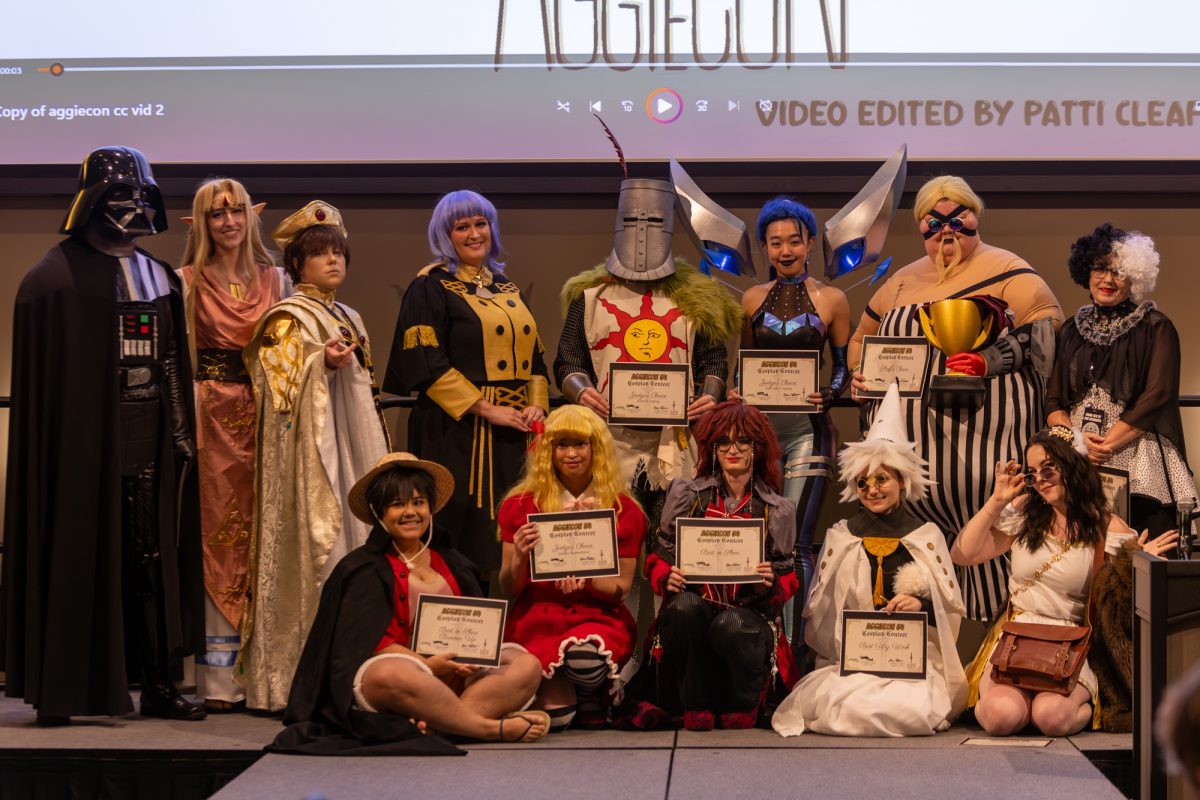As the weekend campus bustle eased with the setting sun, a moonlit celebration was just beginning. On Sept. 14, students quietly trickled onto Simpson Drill Field to attend NASA’s International Observe the Moon Night, hosted by Texas A&M’s Astronomy and Physics Department.
With a few minutes left of twilight, the festivities began with student-led educational demonstrations and activities. Among the events was moon crater painting, which allowed students to throw paint-infused sponges on a canvas depicting the south polar region of the moon. The final art product will be submitted to The Art of Planetary Science 2025, an annual art exhibition held at the University of Arizona. Forthcoming moon missions have inspired Allison McGraw, Ph.D., a physics lab manager in the Physics and Astronomy Department, to represent the south polar region.
“I chose the south polar region to create data art because the astronauts are going back to the south pole through the Artemis 3 mission,” McGraw said. “We are making a map to inspire those to learn about the south pole where humans get to go. And not only that — they are putting males and females back on the moon in the Artemis 3 mission, which is still a few years out.”
Other activities featured demonstrations on topics such as the barycenter, the gravitational balance point between the earth and the moon, the conservation of angular momentum and the fabric of spacetime.
“The point of our demonstrations is to show the concepts from physics in a way that the general public can visualize it and learn,” physics senior Caitlin Fullerton, who led the fabric of spacetime demonstration, said. “I just enjoy being able to spread the knowledge of physics out to the general public and take down that stigma that physics is super difficult and only super genius people can do it.”
As night approached, attendees began to flock towards the telescopes set up on the field to get a glimpse of the moon in all of its waxing gibbous glory. Though the view was momentarily stalled by overcast skies, it didn’t dim the buzz — plenty of conversations lit up the event. For many people, the telescopes were the main reason for their attendance. For material science senior Noor Mohamed, it was a rare opportunity to be able to use one.
“I’m sure there’s a lot of people that are interested in space, but they don’t really have any resources to be able to see the moon up close,” Mohamed said. “Sometimes just looking through a screen on your computer, it’s not the same. So I feel like when A&M has events like this, it gives the community opportunities to do things that they can’t do because they don’t have the resources.”
While some students caught glimpses of the moon through peaks of clouds, others gathered around the Astronomy and Physics Department’s live-stream led by McGraw.
She covered topics like the origin of International Observe the Moon Night, which stemmed from the excitement of NASA scientists when high resolution images were returned from the lunar reconnaissance orbiter camera.
“The first high resolution images came back from the moon and the NASA scientists were so inspired by the high resolution images,” McGraw said. “You can resolve features that are basically the size of a normal desk that you sit at at school with a camera.”
An authentic moon rock sample lent by NASA from the Apollo 15 mission was also on display and discussed during the livestream. However, the main attraction was revealing the results of the NASA Moon Tree naming competition. Name submissions were entered from around the world over the course of August. The famous sapling is a Texas native sweetgum species and also made an appearance during the announcement of the winning name.
“We have a NASA Moon Tree that we ran a naming competition for around the world,” McGraw said. “Our Moon Tree ran an orbit around the world for four weeks in the fall of 2022. The name is selected as Gerry after Class of 1956[‘s] Gerry Griffin, who was an Apollo flight director. This is an amazing tribute, so we are excited to have that.”
As the night came to a close, the Moon’s Symphony began to play throughout Simpson Drill Field. The Moon’s Symphony is a musical composition by Amanda Lee Falkenberg, an Australian-born composer and pianist who was inspired by the moon exploration missions.
“There are not a lot of people who walk up to this telescope, look through it and just say, ‘Oh, OK, I guess that’s just a full-size image of the moon,’” aerospace engineering senior Collin Stafford said. “There is a sense of wonder in seeing something that has been out there for your whole life — but seeing it in a totally new way.”










